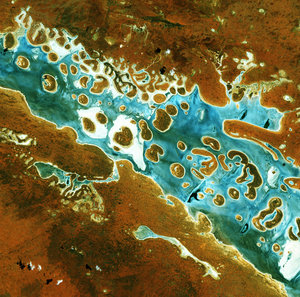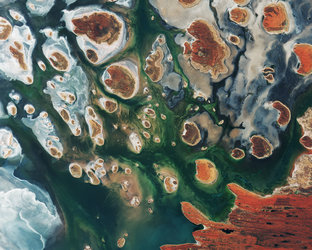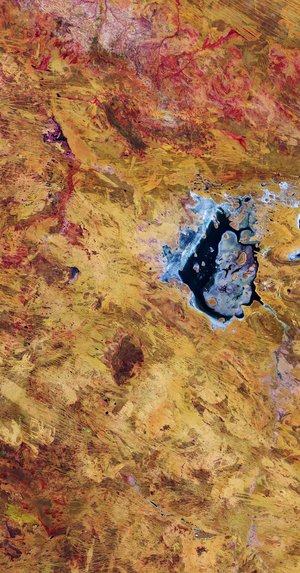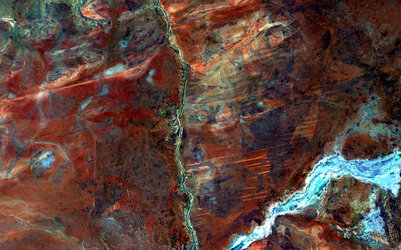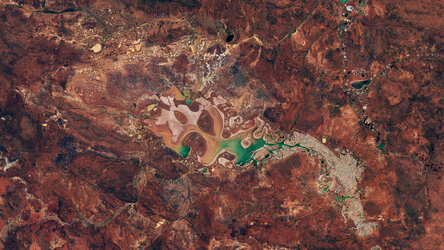
Earth from Space: Northern Territory, Australia
This image captured by the Copernicus Sentinel-1 mission reveals the impact of severe flooding following heavy rain that hit Australia’s Northern Territory in March 2024.
Zoom in to explore this image at its full resolution or click on the circles to learn more.
According to the Australian Bureau of Meteorology, March 2024 was the second wettest March on record for the territory, with rainfall far exceeding the average. To make matters worse, tropical cyclone Megan struck the already drenched area, further exacerbating the situation.
This false-colour radar image combines data from two acquisitions, one from 10 March prior to the rainfall, and one from 22 March after the downpour. Flooded areas are highlighted in red, while dark areas represent permanent water bodies or fields that are frequently submerged.
Tarrabool Lake, the large dark patch in the bottom right, is a seasonal lake whose water level fluctuates. Its swampy wetlands and the nearby tropical forests provide an essential habitat for small mammals, reptiles, and numerous bird species.
Although fed by various creeks, Creswell Creek, flowing down from the northeast, is its main water source and appears to have overflowed, as did most rivers in the area.
Owing to their importance as a breeding site for waterbirds, Tarrabool Lake and the Eva Downs swamp system are listed as an Important Bird Area by BirdLife International, as is Lake Woods, a large ephemeral freshwater wetland, visible as a black patch in the top left corner.
Typically around 350 sq km, Lake Woods can expand significantly during periods of seasonal heavy rainfall, supporting up to 116 000 waterbirds when fully inundated.
Copernicus Sentinel-1’s radar ability to ‘see’ through clouds and rain, and in darkness, makes it particularly useful for monitoring floods. These images can offer immediate information on the extent of inundation, aiding relief efforts. Also, after such events, satellite images are a valuable resource for assessing damage and planning restoration.

